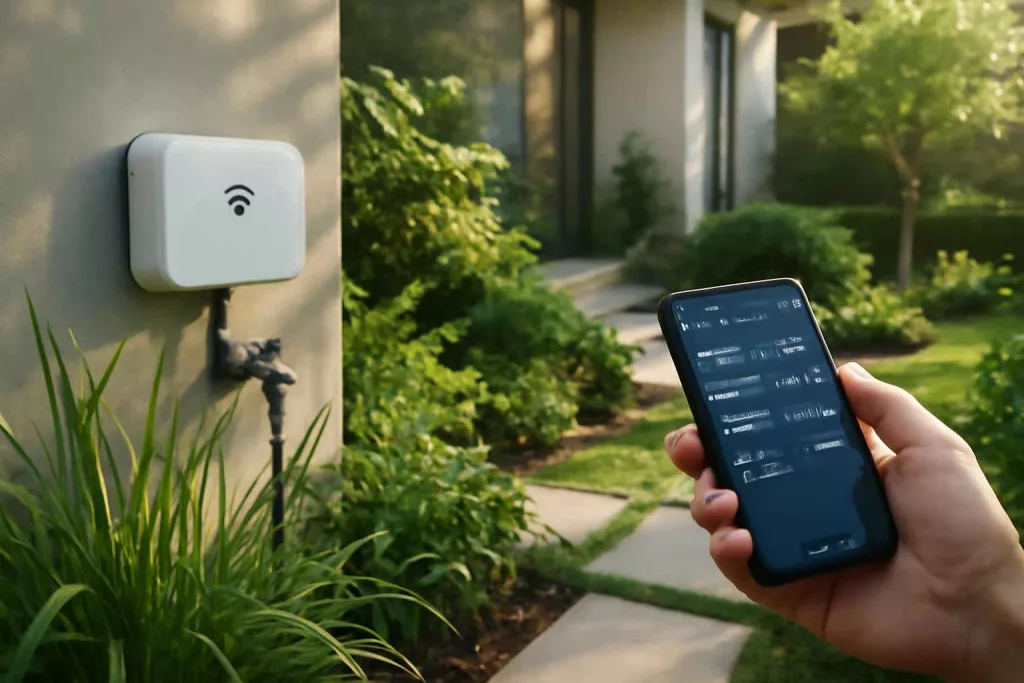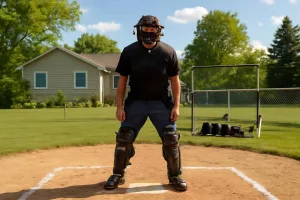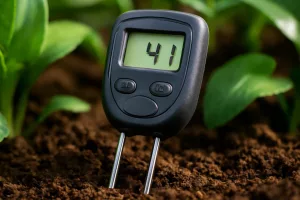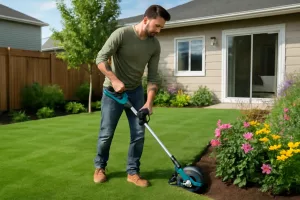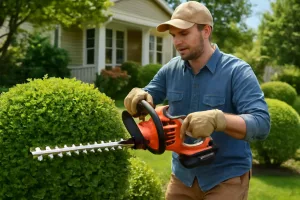Managing your garden’s irrigation schedule manually can be time-consuming and inefficient. A Wi-Fi smart irrigation controller automates your sprinkler system, adjusts watering based on weather forecasts, and ensures your plants receive the right amount of water when they need it. Whether you have a small backyard flower bed or an extensive vegetable patch, upgrading to a smart controller can help you conserve water, reduce your utility bills, and maintain a healthy garden year-round. The following guide covers everything you need to know about choosing, installing, and maintaining the best Wi-Fi smart irrigation controller in your home garden.Explore smart irrigation controllers on Amazon.
What Is a Wi-Fi Smart Irrigation Controller?
A Wi-Fi smart irrigation controller is an advanced timer for your sprinkler or drip irrigation system that connects to your home’s wireless network. Unlike traditional irrigation timers that follow static schedules, these smart controllers use real-time local weather data, soil moisture levels, and plant-specific watering requirements to create dynamic watering schedules. By using a mobile app or web portal, you can remotely monitor and manage multiple irrigation zones, receive alerts about system performance, and make on-the-fly adjustments from anywhere.
These units typically replace your existing irrigation timer, use the same wiring harness, and fit easily into standard controller boxes. Once installed, you register the device on its companion smartphone app, configure zones based on controller terminals, and set watering parameters such as run time, start times, and moisture thresholds. Integration with voice assistants like Alexa or Google Assistant adds convenient voice commands for pausing or starting irrigation cycles.
Benefits of Using a Smart Garden Irrigation System
Water Conservation
One of the biggest advantages of a Wi-Fi smart irrigation controller is its ability to optimize water usage. By accessing local weather forecasts and rainfall data, smart controllers automatically skip or delay watering when recent precipitation or rain predictions indicate the soil is already sufficiently moist. According to the EPA, smart controllers can reduce outdoor water use by up to 30%. This not only conserves a precious resource but also lowers your monthly water bill.
Convenience and Scheduling
Manually programming timers can be a hassle, especially when schedules change with the seasons. Smart irrigation controllers offer easy-to-use interfaces where you can set custom watering schedules for each zone, adjust run times with a few taps, and view your entire irrigation plan on a single dashboard. If you’re traveling or away for extended periods, you can ensure your garden stays healthy without needing a neighbor or professional service to manage your system.
Weather-Based Adjustments
Real-time weather integration is at the core of any Wi-Fi smart irrigation controller. These devices pull data from local weather stations or proprietary networks to automatically modify watering schedules. If a storm is incoming, the controller postpones the next cycle; during high winds, it may shorten sprinkler run times to minimize water loss. This level of automation takes the guesswork out of irrigation and improves the overall resilience of your garden in changing climate conditions.
Key Features to Look For
Zoning Capabilities
Different plants and lawn sections often require different watering schedules. Look for controllers that support at least four to eight zones, and consider expandable models if you plan to add more sprinkler lines in the future. Zone-level customization allows you to tailor watering durations, start times, and moisture thresholds based on plant type, soil composition, and sunlight exposure.
Integration with Smart Home Platforms
Many Wi-Fi irrigation controllers seamlessly integrate with popular smart home ecosystems. If you already use a voice assistant or home automation hub, choose a controller compatible with Amazon Alexa, Google Assistant, or Apple HomeKit. Integration lets you include irrigation in broader automation routines—such as pausing watering when a storm sensor triggers or starting a morning garden scene with lights and sprinklers.
Mobile App and Alerts
An intuitive mobile app is essential for monitoring and adjusting your irrigation remotely. Check reviews for app stability, ease of navigation, and features like push notifications or email alerts. Notifications can warn you of wiring issues, offline connectivity, or low battery (if applicable), helping you address problems before they harm your plants.
Expansion and Compatibility
Whether you use drip irrigation, sprinklers, or a combination, verify that the controller supports your valve types and wiring scheme. Some advanced models also accept soil moisture sensor inputs or weather station telemetry. If you plan to expand your garden irrigation, choose a controller that accommodates add-on modules or extra zones.
Top 5 Wi-Fi Smart Irrigation Controllers for Home Gardens
Below are our top picks based on performance, features, and user feedback. Each model includes a direct link to check current prices and availability.
1. Rachio 3 Smart Sprinkler Controller
The Rachio 3 stands out for its advanced weather intelligence and sleek design. It supports up to eight zones and features easy app-based scheduling with Flow Meter compatibility for leak detection. Users praise the reliable Wi-Fi connectivity and detailed watering reports. Check the latest price.
2. Orbit B-hyve XR Smart Sprinkler Controller
Orbit’s B-hyve XR offers a competitive price point with high-end features like horizon weather skip, rain delay, and drip zone support. The app provides local weather adjustments and zone-level customization. Installation is straightforward and compatible with standard controller boxes.
3. RainMachine Touch HD-12
With a responsive touchscreen and support for up to 12 zones, the RainMachine Touch HD is ideal for larger gardens. It uses NOAA weather data and offers advanced data logging. The unit works offline on your local network for added privacy and security.
4. Hunter Hydrawise HC-1200
Hunter’s Hydrawise controller integrates with the Hydrawise cloud platform, offering predictive watering based on weather forecasts. The HC-1200 supports up to 12 zones, multiple controllers can be linked in one account, and professional-grade features like master valve control are included.
5. Netro Sprite Smart Irrigation Controller
Netro Sprite is a budget-friendly option for small to medium gardens, offering four-zone control, local weather integration, and solar power compatibility. The minimalist design and plastic-free packaging make it an eco-conscious choice.
How to Install Your Wi-Fi Sprinkler Controller: Step-by-Step Guide
Pre-Installation Checklist
Before you begin, gather the following tools: screwdriver, wire stripper, and your smartphone. Turn off power to the old controller at the breaker. Verify you have a working Wi-Fi signal at the controller location. If signal strength is weak, consider a Wi-Fi extender or relocate your router.
Wiring and Connectivity
Remove the old controller and label each zone wire. Connect the wires to the new smart controller terminals, matching common (C) wires and zone wires accordingly. Secure the unit to the wall inside your controller box, restore power, and wait for the LED or touchscreen to indicate connectivity mode.
Configuring Zones and App Setup
Download the manufacturer’s app and create an account. Follow in-app prompts to detect the controller and assign each zone a name (e.g., front lawn, vegetable garden). Set default run times, start times, and watering frequency. Verify connection by initiating a manual zone test in the app.
Troubleshooting Common Issues
Connectivity Problems
If the controller fails to connect to Wi-Fi, ensure the SSID and password are correct. Check that your 2.4 GHz network is broadcasting and that the controller is within range. Restart your router and the controller if necessary.
Valve and Wiring Errors
Incorrect wiring can cause zones not to activate. Double-check terminal assignments and wiring labels. Use a digital multimeter to test for continuity if a valve doesn’t respond. Ensure each valve’s solenoid wires are securely fastened to the zone terminals.
Weather Adjustments Not Working
If your controller isn’t adjusting for weather, verify that location settings in the app are correct and that weather data permissions are granted. Some controllers require regional weather station selection—confirm you’ve chosen the correct station.
Maintenance Tips for Long-Lasting Performance
Seasonal Checks
At the start and end of each watering season, inspect wiring connections, terminals, and valve operation. Replace cracked or corroded wires, and clear any debris inside the controller enclosure.
Firmware Updates
Manufacturers regularly release firmware updates to address bugs and improve performance. Check your app’s settings for firmware update notifications and apply updates promptly when available.
Cleaning and Protection
Keep the controller enclosure free from dirt and insects. Use a dry cloth to wipe down the Wifi antenna and vents. In cold climates, consider winterizing the system by draining lines and shutting off water supply to prevent freeze damage.
Conclusion
Upgrading to a Wi-Fi smart irrigation controller revolutionizes how you water your home garden. With weather-based adjustments, remote control, and customizable zones, you’ll enjoy healthier plants while conserving water and time. Ready to simplify your garden care? Shop top smart irrigation controllers on Amazon today and start watering smarter.
For more outdoor tool recommendations like efficient battery-powered lawn edgers or precise cordless hedge trimmers, explore our garden equipment guides. If you need guidance on connecting smart devices at home, check our DIY Wi-Fi thermostat installation guide.
